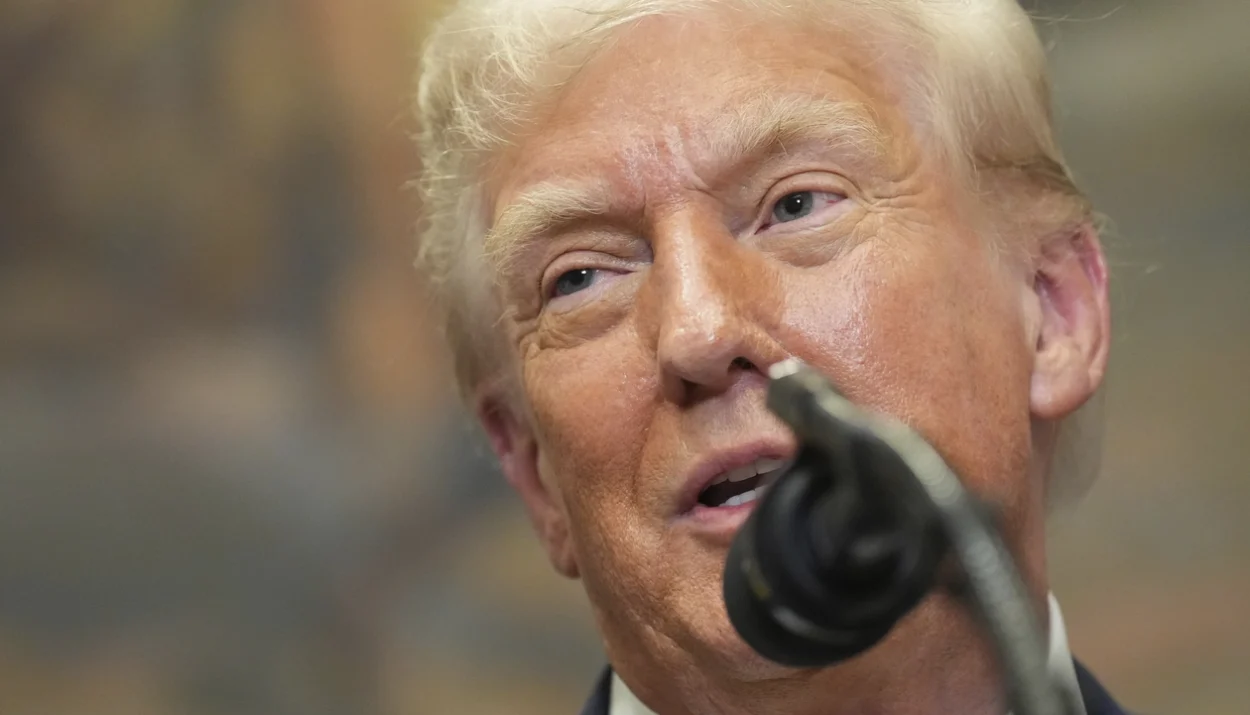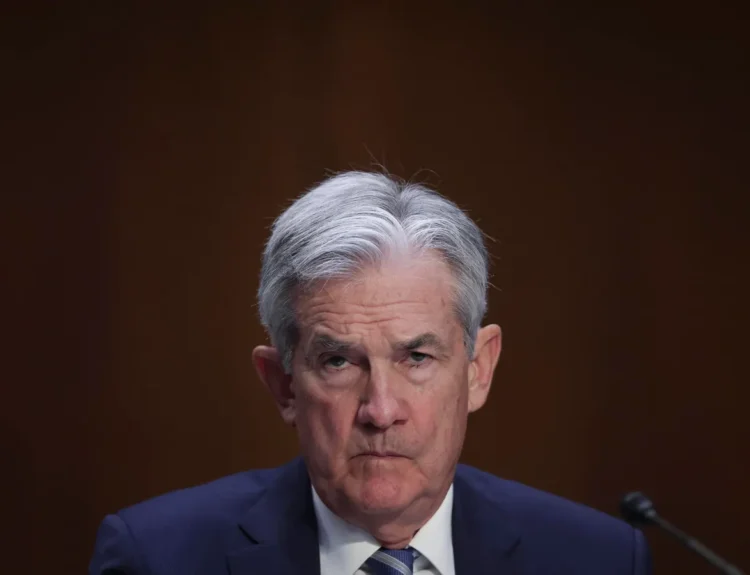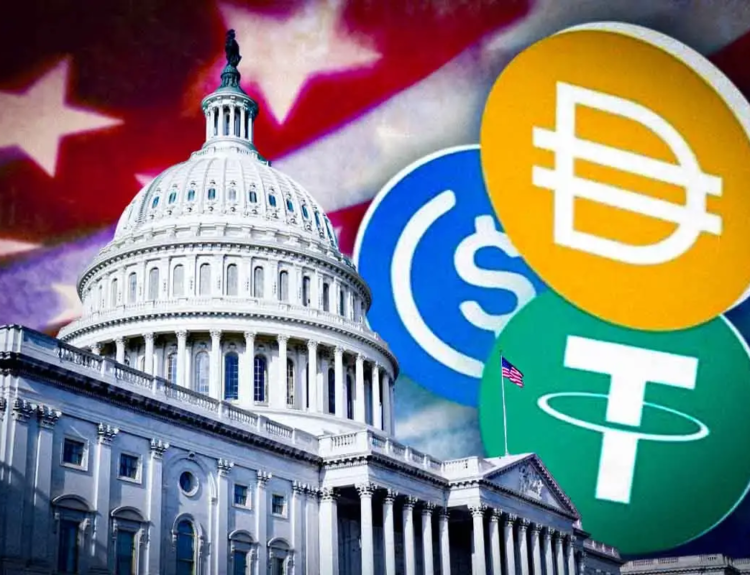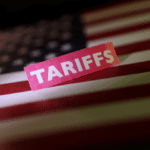“This is historic,” a senior official declared. Trump’s new order imposes tariffs up to 41%, rewrites global tariff trade rules, and warns more hikes are likely.
In a sweeping and unprecedented move, President Donald Trump signed an executive order late Thursday imposing a new range of tariffs on more than 67 countries, escalating his push for “reciprocal” trade and shaking global markets. The new duties—ranging from 10% to 41%—will go into effect on August 7, with White House officials confirming that the action represents a complete overhaul of US trade posture heading into the fall.
Key Takeaways:
- New tariff rates range from 10% to 41%, depending on trade balance, cooperation, and alignment with US national security.
- Canada hit with a 35% tariff, up from 25%, starting Friday.
- A universal 10% tariff will apply to all non-listed countries.
- 40% tariff on transshipped goods to crack down on duty evasion.
- EU, Japan, South Korea, Indonesia, and the Philippines secured lower rates through partial deals.
- Markets reacted negatively, with major Asian indexes falling more than 3% in some cases.
- More tariff deals and increases may follow, according to US officials and trade analysts.
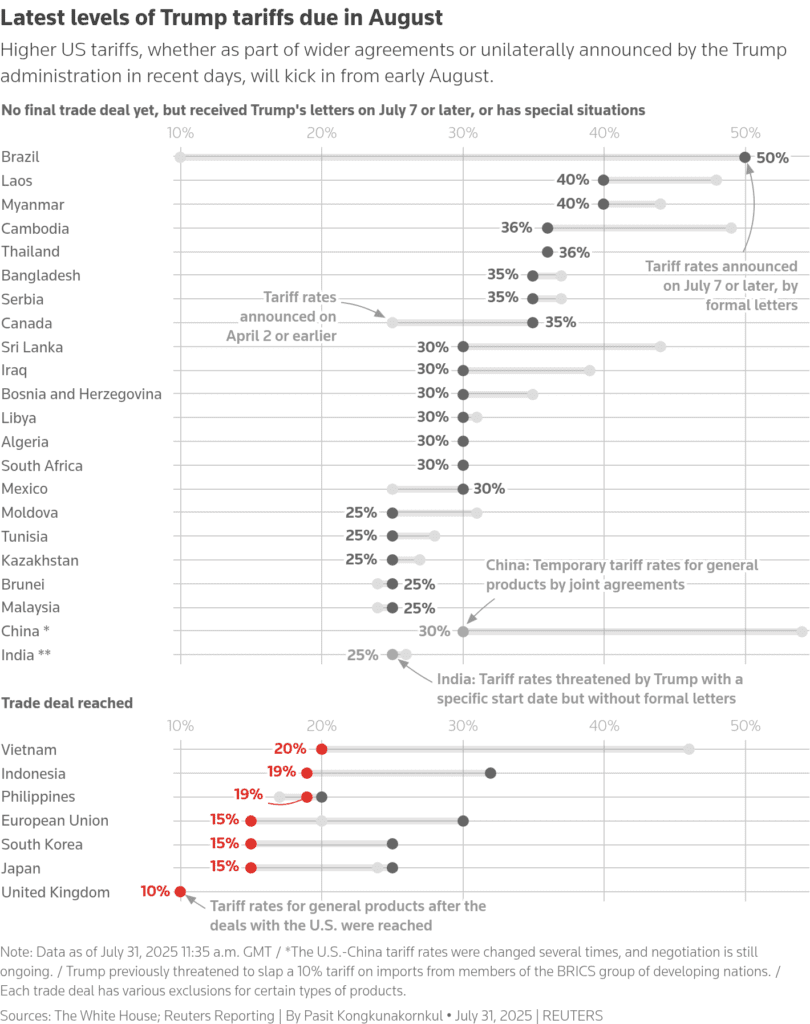
A New Tariff Regime: “The Trump Round of Negotiations”
Calling it “the Trump round of negotiations,” a senior White House official explained the move as part of a broader effort to rebalance trade with partners who “have failed to align with the US on economic and national-security matters.” The order formalises months of threats, delays, and partial deals. According to the document, countries that have negotiated in good faith—such as the EU and some Asian allies—received preferential terms.
Notably:
- The European Union: Goods with duties under 15% will see a total tariff rate raised to 15%; goods already above 15% face no extra tariffs.
- Canada: Hit with an immediate hike from 25% to 35% for non-USMCA-compliant goods.
- Taiwan, Malaysia, Thailand: Received slightly lower rates than initially expected (19-20%) due to ongoing negotiations.
Transshipment Crackdown: 40% Tariffs
A key component of the new order is a 40% penalty tariff on any goods deemed to be transshipped—that is, rerouted through other countries to avoid tariffs. Customs and Border Protection (CBP) will publish a list every six months identifying countries and facilities involved in transshipment schemes. CBP is also instructed not to allow mitigation or remission of penalties under the new rule.
Annex I Highlights: Country-Specific Tariffs
According to the published Annex I, here is list of adjusted tariff rates include:
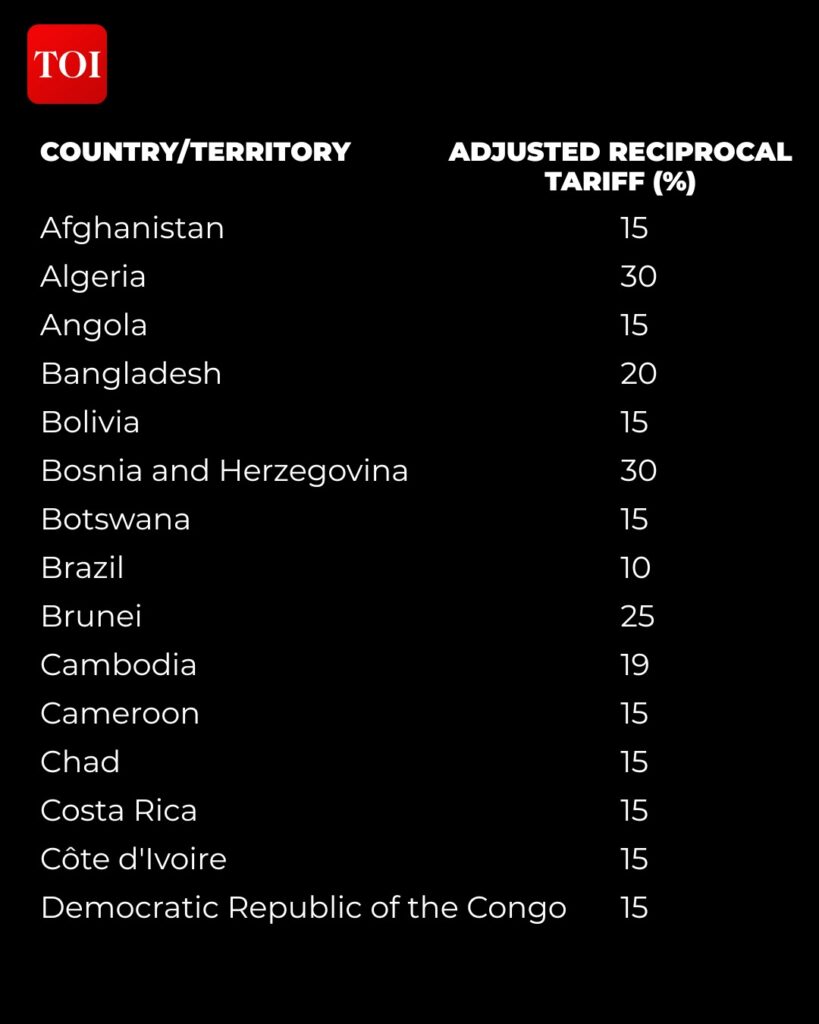
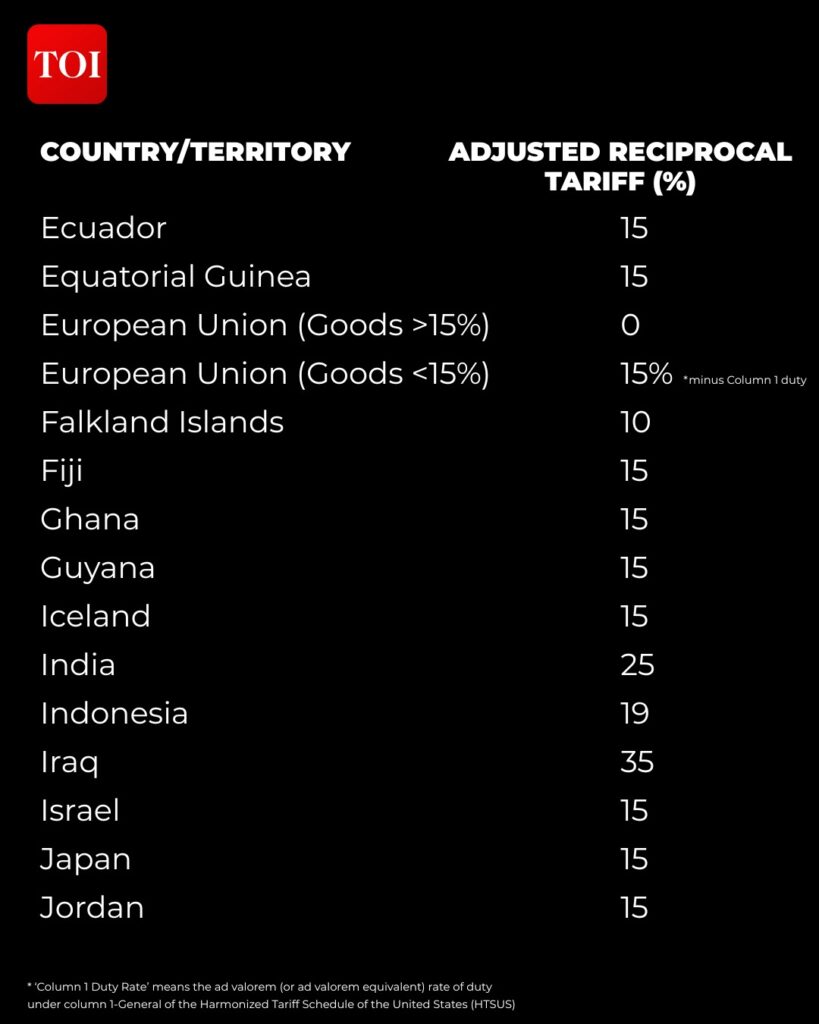
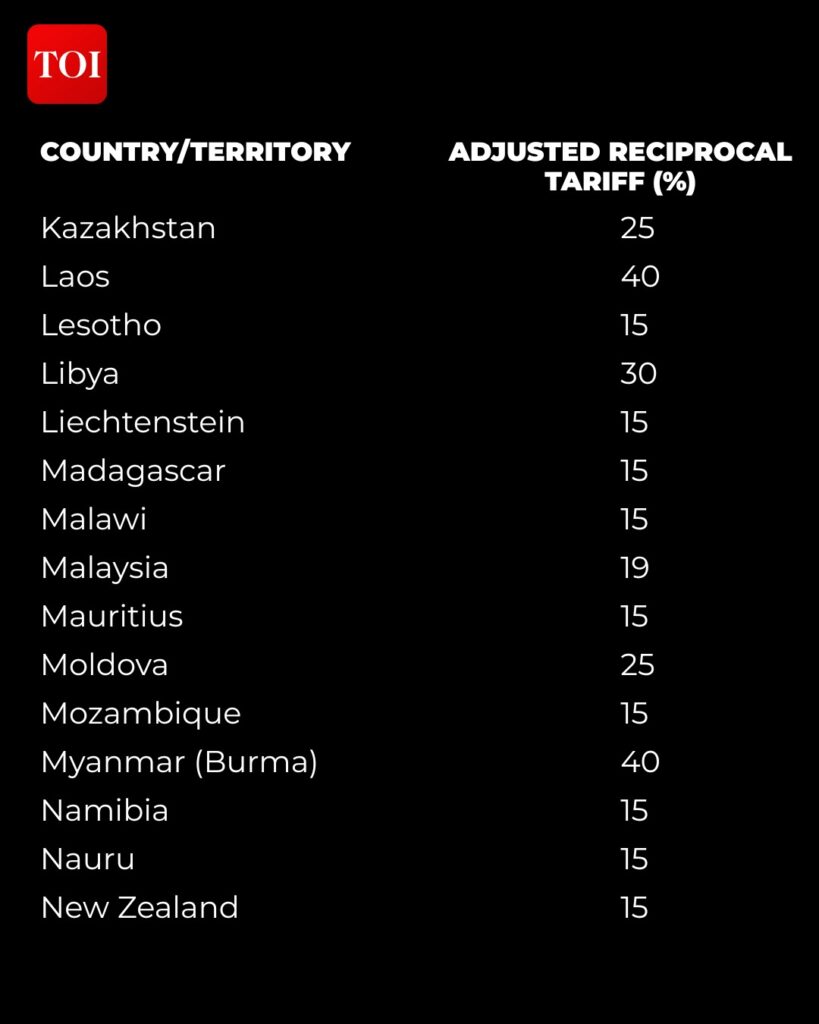
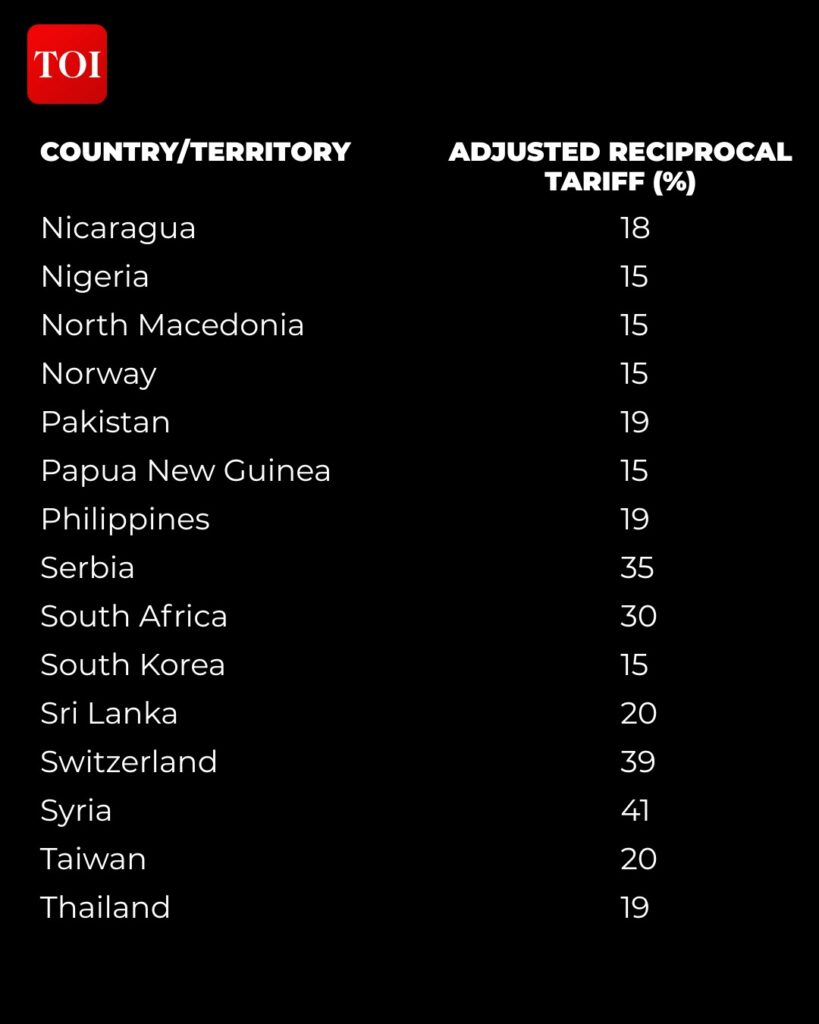
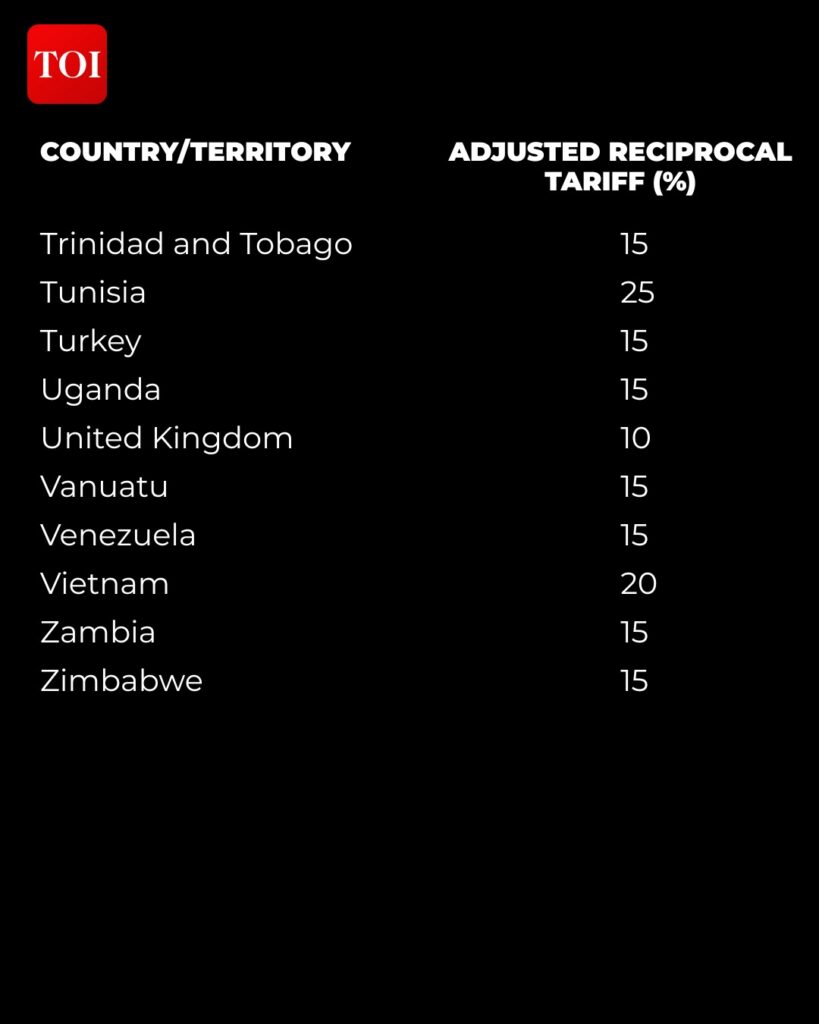
Implementation Timeline and Loopholes
While the tariffs will become effective August 7 at 12:01 AM EDT, shipments already in transit before that time will be exempt—provided they arrive by October 5. A White House official told CNBC this is not an extension but a practical measure to allow US Customs time to implement the new structure.
Trump: “Too Late” for More Deals—But Maybe Not Forever
Speaking to NBC News on Thursday evening, Trump signaled a temporary end to dealmaking: “It’s too late now,” he said, regarding further pre-deadline negotiations. However, he hinted that deals could still be made in the future: “Don’t assume this is the end of the story.”
On Truth Social, Trump reinforced the hardline tone:
“THE AUGUST FIRST DEADLINE IS THE AUGUST FIRST DEADLINE — IT STANDS STRONG, AND WILL NOT BE EXTENDED. A BIG DAY FOR AMERICA!!!”
Global Market Reaction
The tariff decision sent a chill through global markets:
- South Korea’s KOSPI: -3.1%
- Japan’s Nikkei 225: -0.66%
- Australia’s ASX 200: -0.76%
Fears of retaliatory measures, supply chain disruptions, and rising inflation have resurfaced.
Analysts Warn: More Pain—and Chaos—May Follow
Trade experts warn that Thursday’s order could trigger a new era of global economic instability.
Stephen Olson, former US trade negotiator:
“Countries wishing to trade with the US will now face dramatically higher tariffs that could be further increased at the whim of a president who has shown disdain for trade rules.”
Wendy Cutler, former USTR deputy, cautioned:
“Don’t assume this is the end of the story … more deals and further tariff increases are almost certain to follow.”
Analysts also noted that China, which secured a temporary tariff truce through August 12, might interpret the transshipment clause as aimed directly at its exporters and respond accordingly.
Geopolitical Implications and Next Steps
The executive order reinforces Trump’s broader campaign strategy to present himself as a protector of US manufacturing and jobs. It also raises serious questions about global supply chain stability and upcoming diplomatic responses.
According to White House officials, more deals may still be signed before August 7, but countries that failed to meet US demands will face the full weight of the tariffs.
As trade partners scramble to respond and investors digest the fallout, one thing is clear: Trump’s tariff doctrine is back, louder—and sharper—than ever.
Related:
What Happens After Tariff Deadline and What Next 72 Hours Look Like for Markets
Trump’s Tariffs Are Real, But Are His Trade Deals Just for Show?
Figma Is Largest VC-Backed American Tech Company IPO in Years


